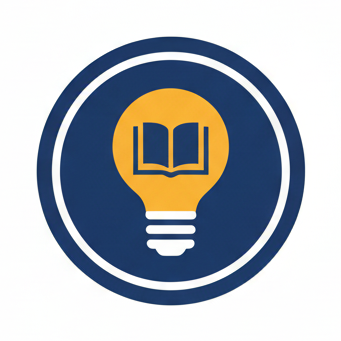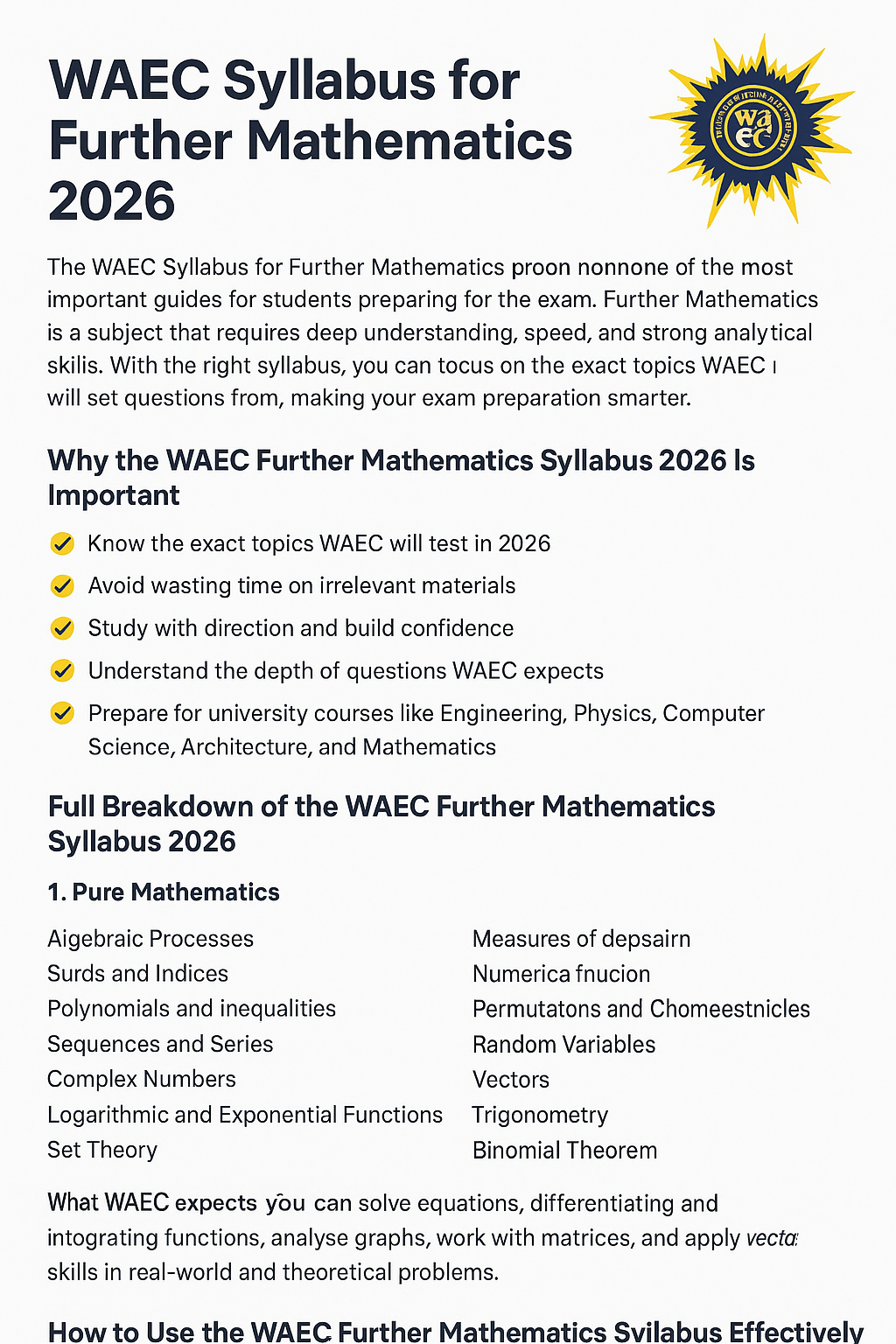The WAEC Syllabus for Further Mathematics 2026 is now one of the most important guides for students preparing for the exam. Further Mathematics is a subject that requires deep understanding, speed, and strong analytical skills. With the right syllabus, you can focus on the exact topics WAEC will set questions from, making your exam preparation smarter and more effective.
This simplified and well-explained guide will help you understand every major area of the 2026 syllabus, what WAEC expects from you, and how you can prepare confidently.
Why the WAEC Further Mathematics Syllabus 2026 Is Important
Studying Further Mathematics can be challenging because the subject goes beyond the basics taught in normal Mathematics. This syllabus helps you:
- Know the exact topics WAEC will test in 2026
- Avoid wasting time on irrelevant materials
- Study with direction and build confidence
- Understand the depth of questions WAEC expects
- Prepare for university courses like Engineering, Physics, Computer Science, Architecture, and Mathematics
When you follow this syllabus closely, your chances of scoring high increase greatly.
Full Breakdown of the WAEC Further Mathematics Syllabus 2026
The syllabus covers five major areas:
1. Pure Mathematics
This section forms the foundation of Further Mathematics.
Topics Include:
- Algebraic Processes
- Surds and Indices
- Polynomials and Inequalities
- Sequences and Series
- Complex Numbers
- Logarithmic and Exponential Functions
- Set Theory
- Functions and Graphs
- Differentiation
- Integration
- Differential Equations
- Coordinate Geometry
- Matrices and Determinants
- Vectors
- Trigonometry
- Binomial Theorem
What WAEC Expects
Students must be able to solve equations, differentiate and integrate functions, analyse graphs, work with matrices, and apply vector skills in real-world and theoretical problems.
2. Mechanics
Mechanics test your understanding of motion and forces.
Topics Include:
- Motion in a Straight Line
- Newton’s Laws of Motion
- Scalars and Vectors in Mechanics
- Equilibrium of Forces
- Friction
- Work, Energy, and Power
- Projectiles
- Moments
- Impulse and Momentum
WAEC Focus
Students should be able to calculate speed, velocity, acceleration, forces, and energy while interpreting physical situations mathematically.
3. Statistics & Probability
WAEC tests your ability to collect, analyse, and interpret data.
Topics Include:
- Measures of Central Tendency
- Measures of Dispersion
- Probability Theory
- Permutations and Combinations
- Random Variables
- Normal, Binomial & Poisson Distributions
- Correlation and Regression
WAEC Expectations
Students must interpret data, calculate probabilities, and understand statistical distributions and their applications.
4. Numerical Methods
This section focuses on approximations and practical problem-solving techniques.
Topics Include:
- Approximation and Estimation
- Iteration Methods
- Numerical Integration (like Trapezium Rule)
- Error Analysis
WAEC Focus
Students should understand how to approximate values accurately and solve equations using iterative processes.
5. Business/Finance Mathematics
WAEC sometimes includes applied mathematics concepts found in real-life financial problems.
Topics Include:
- Simple and Compound Interest
- Annuities & Mortgages
- Depreciation
- Investments
- Rates and Proportions
Related Posts:


Leave a Reply